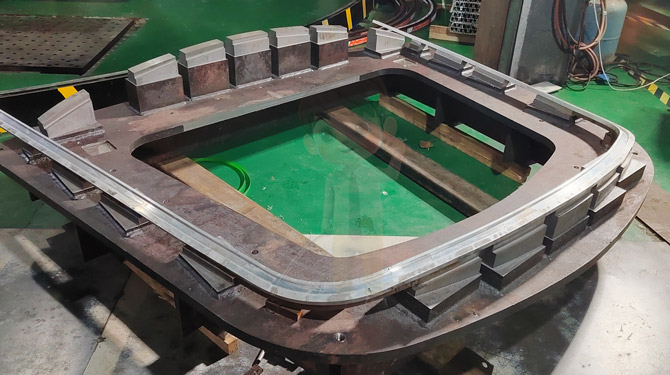A Guide to Equipment Selection and Maintenance for Precision Bending and Drawing Processes
Precision bending and drawing processes are essential in various industries, including automotive, aerospace, and electronics. These processes involve shaping materials into specific forms with high accuracy, requiring specialized equipment. Selecting the right equipment and maintaining it properly are crucial for achieving optimal results. This guide will explore the key considerations for equipment selection and maintenance in precision bending and drawing processes.
Equipment Selection
1. Understand the Material Properties
Before selecting equipment, it is essential to understand the properties of the materials being processed. Material thickness, tensile strength, ductility, and grain structure all influence the selection of bending and drawing equipment. For instance:
-Metals: Different metals (e.g., aluminum, steel, copper) require specific bending tools and techniques due to their varying stiffness and ductility.
-Plastics: When working with plastic materials, the temperature and cooling rates can affect their behavior during bending and drawing.
2. Determine the Required Precision
Precision is paramount in bending and drawing operations. The required tolerance levels will dictate the choice of machinery. Equipment with higher precision capabilities often comes with advanced features such as:
-CNC Control: Computer Numerical Control (CNC) machines allow for automated and highly accurate bending and drawing processes.
-Hydraulic vs. Mechanical Presses: Hydraulic presses are generally preferred for applications requiring greater force and flexibility, while mechanical presses can offer faster cycle times for less complex tasks.
3. Consider the Production Volume
The expected production volume plays a significant role in equipment selection. High-volume production may justify the investment in more sophisticated, automated machinery, while low-volume or prototype runs may be better suited for manual or semi-automated equipment. Key considerations include:
-Batch Size: Determine whether the equipment will be used for large-scale production or small batches.
-Setup Time: Equipment with quick setup features can minimize downtime between runs, which is crucial for high-mix, low-volume production.
4. Evaluate Space and Budget Constraints
The size of the equipment and the available workspace are critical factors. Ensure that the selected equipment can fit within the designated area while allowing for safe operation and maintenance access. Additionally, budget constraints will influence the choice of new versus used equipment, as well as the level of technology incorporated.
5. Review Supplier Reputation and Support
Choosing a reputable supplier is essential for obtaining quality equipment and reliable after-sales support. Look for suppliers that offer:
-Warranty and Service Agreements: These can provide peace of mind in case of equipment failure.
-Technical Support and Training: Quality suppliers often provide training for operators, ensuring safe and efficient use of the equipment.
Maintenance Practices
1. Regular Inspections
Conduct routine inspections of equipment to identify wear and tear early. Regular checks should include:
-Hydraulic Systems: Check for leaks, fluid levels, and pressure gauges.
-Mechanical Components: Inspect for signs of stress, damage, or misalignment.
2. Lubrication
Proper lubrication of moving parts is crucial to prevent friction and wear. Follow the manufacturer’s recommendations regarding:
-Lubrication Intervals: Establish a regular schedule for lubrication to maintain optimal performance.
-Lubricant Types: Use the appropriate lubricants specified for different components to ensure compatibility.

3. Calibration and Alignment
Maintaining equipment accuracy requires regular calibration and alignment checks. This should include:
-Bending Angles and Radii: Ensure that bending machines are calibrated to achieve specified angles and radii consistently.
-Tool Alignment: Regularly check and adjust tool alignment to prevent defects in the final product.
4. Addressing Issues Promptly
Timely repairs are essential to prevent minor issues from escalating into significant problems. Implement a system for:
-Reporting Issues: Create a protocol for operators to report equipment malfunctions or irregularities.
-Preventive Maintenance: Schedule routine maintenance tasks to address potential issues before they affect production.
5. Documentation and Training
Maintain thorough documentation of all maintenance activities, including inspections, repairs, and parts replacements. Additionally, ensure that all operators are trained in:
-Equipment Operation: Proper training will help minimize accidents and improve efficiency.
-Maintenance Procedures: Operators should be familiar with routine maintenance tasks to extend the lifespan of the equipment.
Selecting the right equipment for precision bending and drawing processes requires a thorough understanding of material properties, precision requirements, production volume, space, and budget constraints. Equally important is the implementation of effective maintenance practices to ensure that equipment operates efficiently and reliably over time. By following this guide, manufacturers can optimize their bending and drawing operations, leading to improved product quality and increased productivity.
24
2025-10
Number of visitors:1
HOT NEWS
-
High-precision bending processing service: Automated bending process
2025-12-08
-
High-Accuracy Curve Forming: Achieving Consistent Bends in Aluminum, Steel, and Alloy Materials
2025-11-27
-
Advanced CNC Tube Bending Technology: Achieving Consistent and Reliable Precision in Complex Shapes
2025-11-17
-
From Design to Execution: How Profile Bending Transforms Architectural and Industrial Projects
2025-11-10




 English
English Chinese
Chinese Japan
Japan German
German

 LIST
LIST
